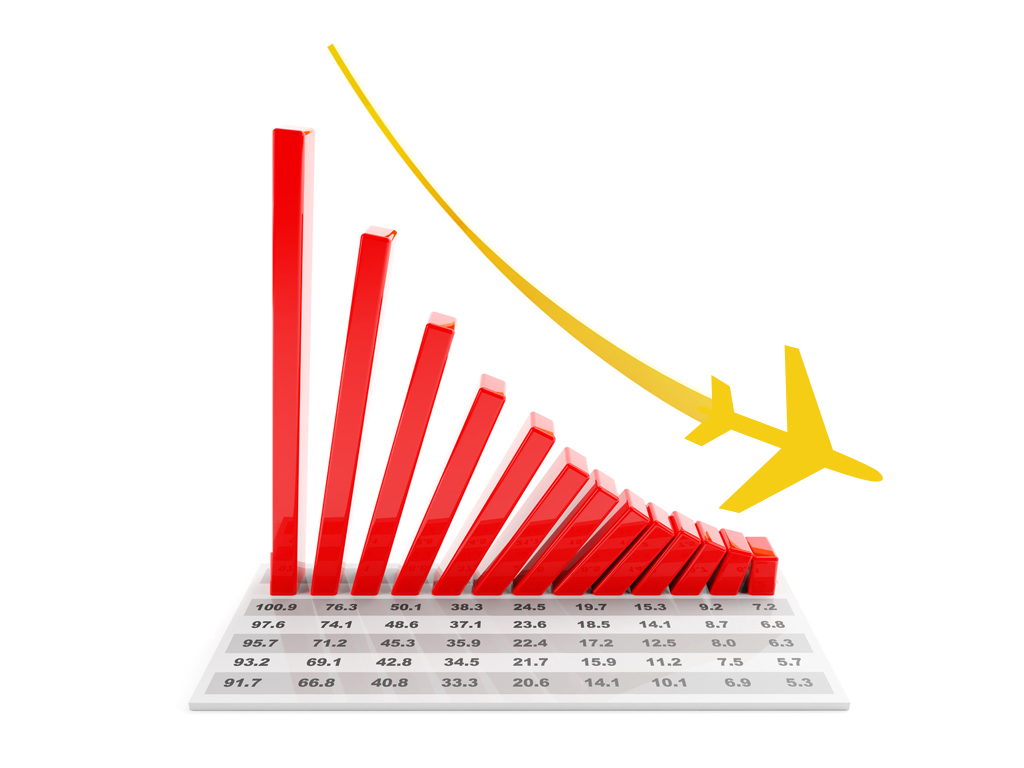IATA: Lockdowns and capacity crunch cause worst year for air cargo demand
04 / 02 / 2021

IATA has revealed that last year was the worst year for air cargo demand since it began recording air cargo trends in 1990.
Looking back at air cargo’s performance in 2020, the association reported a year-on-year decrease in air cargo demand, measured in cargo tonne-km (CTKs), of 10.6% — which is the largest year-on-year drop since its records began.
IATA said that in terms of demand, air cargo had underperformed in 2020 and volumes would have been higher had extra capacity been available.
Industry-wide capacity, measured in available cargo tonne km (ACTKs), declined by 23.3% year on year last year.
IATA attributed air cargo’s performance in 2020 to global lockdowns in the first few months of the year, which disrupted airfreight supply chains until around May. Since then, IATA said: “This recovery has continued until the year-end, despite some volatility when renewed Covid outbreaks forced some markets to implement new restrictions.”
The lack of airfreight capacity last year was caused by bellyhold capacity being reduced when most passenger services were grounded due to Covid-19 restrictions. Carriers managed to add capacity by ramping up freighter operations and making use of preighters, but were “unable to fully compensate the lack of belly capacity”.
IATA explained: “This effect is arguably the main culprit for the underperformance of airfreight, and offsets positive factors such as the need to turn to air travel for PPE and vaccine shipments.”
This lack of airfreight capacity led to increased fares, which peaked in April and May, and spiked again in traditional peak season towards the end of the year.
Also last year, the air cargo load factor climbed by 7.7 percentage points (ppts) to a record high of 54.5%.
Alexandre de Juniac, IATA’s director general and chief executive, commented: “Air cargo is surviving the crisis in better shape than the passenger side of the business. For many airlines, 2020 saw air cargo become a vital source of revenues, despite weakened demand. But with much of the passenger fleet grounded, meeting demand without belly capacity continues to be an enormous challenge. And, as countries strengthen travel restrictions in the face of new coronavirus variants, it is difficult to see improvements in passenger demand or the capacity crunch. 2021 will be another tough year.”
Airfreight rates remain elevated in January despite seasonal slowdown
WorldACD figures highlight a changing air cargo market in 2020
Carriers quick to return cargo capacity to the market after Christmas
Looking at regional performance in 2020, Africa-based airlines experienced the most growth in demand with a year-on-year increase of 1%. Capacity in the region decreased by 17.3%.
Europe-based airlines also experienced a year-on-year decline in volumes — of 16%. Capacity declined by 27.1%.
IATA explained: “New lockdowns and adverse economic conditions in the region put this rebound under pressure in the near term.”
Asia Pacific-based airlines registered a 15.2% year-on-year fall in demand last year. Capacity decreased by 27.4%.
IATA observed: “After a pause in the recovery in Q3 [2020], seasonally affected CTKs accelerated in recent months, driven by the rebound in manufacturing activity and export orders, notably from China and South Korea.”
Latin America-based carriers faced a 21.3% year-on-year decrease in demand. Capacity declined by 35%.
“The underperformance is explained by difficult economic conditions in markets such as Mexico, Argentina and Peru,” IATA said. “The capacity crunch is also stringent in that region.”
Cargo demand for North America-based airlines climbed by 1.1% year on year. Capacity decreased by 15.9%.
Airlines based in the Middle East experienced a year-on-year drop in demand of 9.5%. Capacity in the region declined by 20.9%.
For the month of December last year, industry-wide air cargo demand declined by 0.5% year-on-year — “the best growth performance since November 2019”, IATA said.
“This confirms the positive trends already seen in recent months, despite a large decline in November 2020 (6.2%) relative to the same month in 2019,” the company added.
Meanwhile, airfreight capacity in December declined by 17.7% year on year, while the air cargo load factor rose by 9.9ppts to a new all-time-high for the month (57.3%).
Looking at regional performance in December, the region that experienced the largest growth in demand was North America, which posted a 10.7% year-on-year increase.
IATA noted was “the strongest monthly performance since late 2018”. Meanwhile, capacity decreased by 9.9%.
“Strong traffic on the Asia-North America routes, which was up 2.1% in 2020, contributed to the performance, driven by strong demand from North American consumers for goods manufactured in Asia,” IATA explained.
Middle East-based airlines posted a year-on-year growth in volumes of 2.2%. Capacity in the region decreased by 18.3%.
Africa-based carriers also experienced an increase in demand in December — of 5.4%, while capacity declined by 23.1%.
Europe-based carriers experienced a year-on-year decline in demand of 5.4%, while capacity decreased by 19.6%.
Asia Pacific-based airlines posted a 5.6% year-on-year decline in volumes, while capacity slid 21.9%.
Latin America-based carriers saw a decline of 16.6% year on year, “in line with the outcome of November”, while capacity declined by 29.7%.














